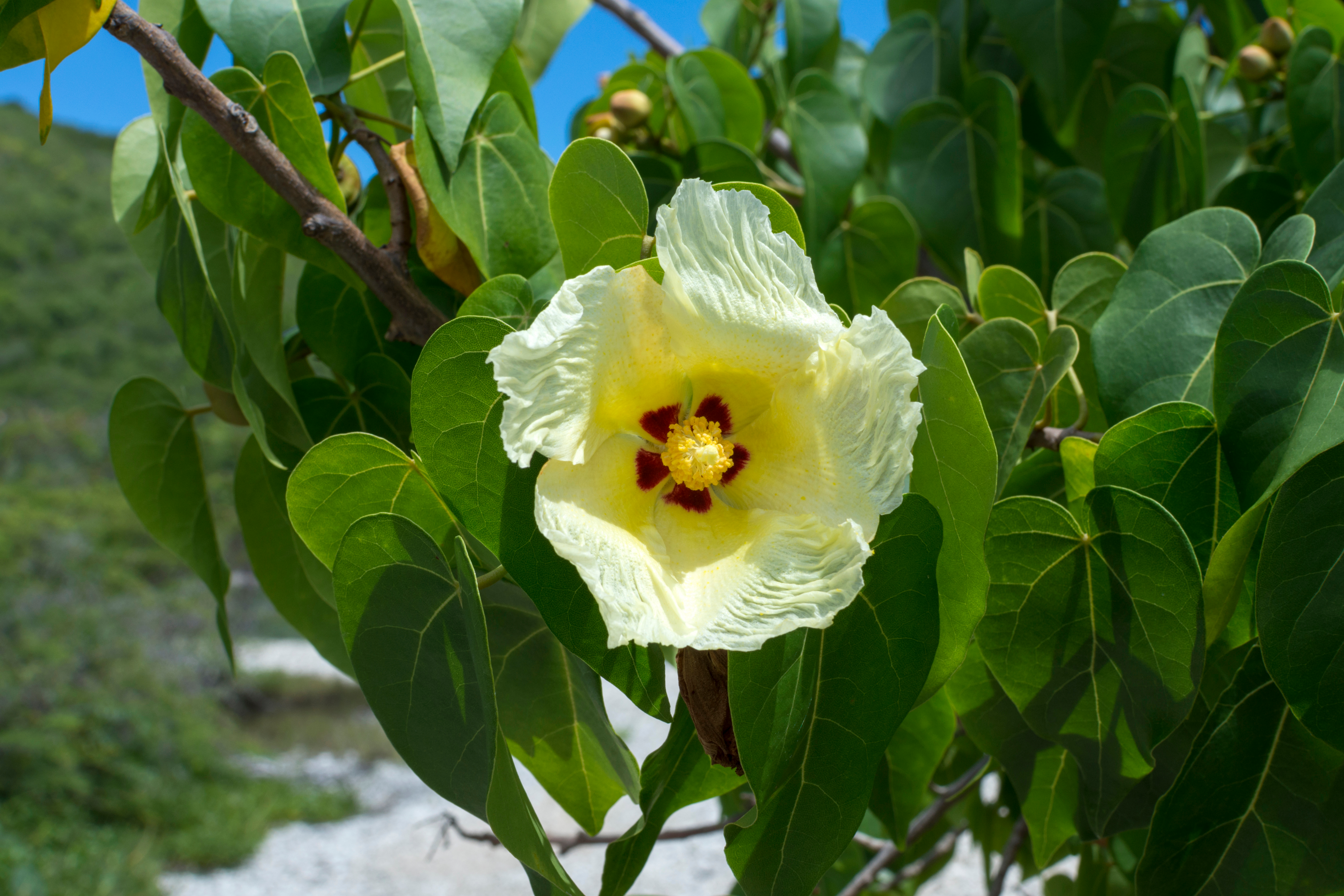Portia tree
(Thespesia populnea)

Description
Thespesia populnea, commonly known as the portia tree, Pacific rosewood, Indian tulip tree, or milo, among other names, is a species of flowering plant belonging to the mallow family, Malvaceae. It is a tree found commonly on coasts around the world. However, the Portia tree is probably native only to the Old World tropics. It was introduced to the Pacific Islands from Island Southeast Asia by prehistoric Austronesian voyagers. Thespesia populnea is native to the Old World tropics and is adapted for sea dispersal and growth in island environments. Like the related Talipariti tiliaceum, it was one of the main sources of bast fibers for the production of cordage and wood for Austronesian outrigger ships and carving. Though the plant seeds can survive for months on sea currents, no remains of T. populnea have been recovered from Polynesia prior to the Austronesian expansion (c. 5,000 BP), thus it is regarded as canoe plant, deliberately carried and introduced by Austronesian voyagers in the islands they settled. The trees were regarded as sacred in Polynesian culture, and were commonly planted in marae sites along with trees like Ficus, Fagraea berteroana, Casuarina equisetifolia and Calophyllum inophyllum. The Portia tree reaches a height of 6–10 m (20–33 ft) tall and its trunk can measure up to 20–30 cm (7.9–11.8 in) in diameter. It grows at elevations from sea level to 275 m (902 ft) in areas that receive 500–1,600 mm (20–63 in) of annual rainfall. The Portia tree is able to grow in the wide range of soil types that may be present in coastal environments, including soils derived from quartz (sand), limestone, and basalt; it favours neutral soils (pH of 6–7.4). Pollen grains are approximately 70 microns in diameter. The heartwood of the Portia tree is dark reddish brown to chocolate brown and has a specific gravity of 0.55 to 0.89. Portia tree is known as milo or miro in Polynesian languages. It is popular in Hawaii for woodworking (commonly turned into bowls) because of the range of colours expressed (tan, through yellow, to red). Traditionally it was planted in sacred groves and used for religious sculpture throughout eastern Polynesia. In Tahiti, Milo wood is used in the making of the to'ere (slotted wooden drum), used in traditional Tahitian tribal drumming. Makoʻi was used for the rongorongo tablets of Easter Island.
Taxonomic tree:







